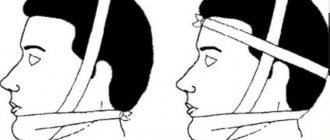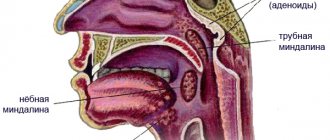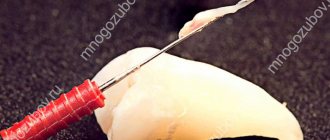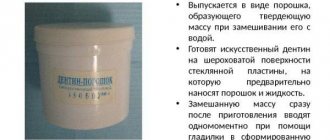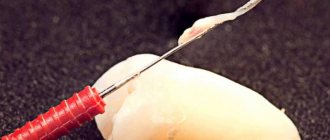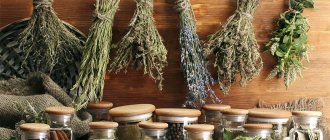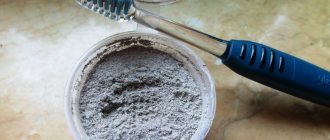blue for linen in stock. This is a powder for quickly enhancing the color of white or blue bedding and clothing made from natural fabrics. Currently, there are many powders that contain bleaches and various color additives for additional color saturation. But nevertheless, blue remains the most accessible substance, which gives fabrics not only freshness and newness, but also the desired shade if the blue substance is used as a dye.
Blue is most often starch, the composition of which is combined with blue mineral paint, mainly ultramarine, blue aniline dyes, indigo carmine, Paris blue or Prussian blue. Household blue is available in liquid, paste or powder form and is divided into two types: soluble and insoluble. Dyes that are highly soluble in water guarantee more uniform toning, coloring and saturation. Insoluble ones are much cheaper and are mainly suitable for refreshing linen made from natural fabrics. You can buy fabric blue in any store in the household chemicals department.
How to remove bluing from white clothes?
You will need 1 teaspoon of citric acid. It must be dissolved in one glass of water. The resulting mixture is heated. The hot solution is applied to the stain and gently rubbed in using a cotton pad.
Interesting materials:
How to make a cur code? How to make classic Slime? How to make the keyboard on iPad smaller? How to make keyboard on the screen? How to make papier mache glue from PVA? How to make tile adhesive with your own hands? How to make glue from scrap materials? How to make glue paste? How to make PVA glue at home? How to make paste for crafts?
Using blue for linen
More effective coloring and refreshment of natural linen can be achieved thanks to the instructions for use of this drug. In the description, pay attention to the procedures in which this substance is used. Certain types of blue are used during washing, some varieties - during the main or final rinsing or soaking process.
It doesn’t matter whether you are going to dye clothes or simply turn your linen blue, the main thing is to use a material based on natural cotton or linen fibers. In order to ensure the quality of the product and its correct dilution, you can initially experiment on a small piece of fabric.
Most often, classic shades of jeans, blue and light blue underwear, and less often white fabric are dyed blue. In order to get a good tinting result, use water-soluble bluing for rinsing. Insoluble may give unwanted divorce). Before use, dry or liquid coloring pigment is thoroughly dissolved in water until a uniform color without clots is obtained. To obtain an ideal solution, the liquid is often filtered through several layers of gauze.
The dyeing process should only be done with clean, washed and rinsed laundry. If the item is large enough, it is best to paint it in the bath. The container is filled with water so that the water completely covers the material. The dye solution is poured into the bath, and the color scheme is regulated by both the concentration of the solution and the volume of water in the vessel. The linen is lowered into the bathtub in a straightened form without folds or bends and kept for a certain amount of time. Good color fixation is achieved after 1-2 hours, but in the instructions for use you can find a more detailed description of the ratios of types of fabric and tinting time. After this, the item is rinsed in plain water or water mixed with vinegar and hung flat to dry.
To eliminate the yellowish tint on white linen, you can use a weak blue solution. Ultramarine gives the material a slightly noticeable bluish tint, which makes the fabric visually whiter.
Manual method
With the manual method, the laundry is blued at the time of the last rinse. To do this, prepare a solution of the dye in the ratio: 0.3 g of powder per 10 liters of water or 2/3 tsp. a paste-like substance or 1-2 dragees are placed in a tightly tied gauze or fabric bag and dipped in water prepared for rinsing clothes. The bag of pigment is soaked until the desired uniform shade is obtained. Liquid blue is dissolved at the rate of 3-4 drops of the substance per 1 liter of cool water. After this, the laundry is lowered into the water (preferably not all at once, but one item at a time) and held for 3-5 seconds.
In the washing machine
Modern bluing agents can be used when washing and dyeing materials and in automatic washing machines, if this is indicated on the preparation. With the mechanical method, it is also necessary to check the liquid dye solution for the presence of unnecessary clots, and thoroughly dissolve the powdery substance in water and remove excess grains of sand, which can lead to damage to clothing. Blue is added to the drum or compartment for cleaning solutions. If the description of the coloring agent recommends adding salt or soda, then you should heed this advice. This is necessary to fix the color. Depending on the density of the fabric, you need to choose the type of washing. This can be intensive washing, cotton processing or washing at 90-95 degrees Celsius. After automatic washing, it is advisable to place the fabric in a container with a vinegar solution to fix the color. To prevent other items from becoming stained when processed in the washing machine, the equipment is run empty and a little bleach is added to the powder compartment. After manipulations, the inside of the machine is wiped dry.
Important
- Blue is needed for those who prefer simplified processing methods to a variety of toxic bleaching powders.
- A high-quality product does not stain containers or the skin of your hands.
- Blue is not a permanent dye. Each subsequent wash will wash out the color pigments, so re-blueing should be done from time to time.
- To obtain a good result, each item must be processed separately.
- Table salt added along with the blue when rinsing will help keep the blue color longer.
- To achieve the desired result, it is better to first practice on old things.
- Always read the instructions for use of the dye, because depending on the manufacturer, release form and composition, dyeing may have different results.
- Blue blue, which contains starch, should be boiled after dilution and then strained.
- Do not try to replace the bluing with a blue item of clothing when washing white clothes in the machine, as this may lead to unpredictable results.
- The chemical should be stored in a tightly closed container out of the reach of children.
Blue is a fairly cheap substance that can replace many expensive powders with a whitening effect. It is also an indispensable product for adding freshness to linen and richness to blue and blue clothes. Also, such a simple, popular substance as blueing can serve as a source of inspiration for creating unusual shades or patterns when dyeing.
Dyeing clothes black
The technology for dyeing fabric black is practically no different from other shades.
- So, let's prepare the coloring composition. Mix warm water with your chosen dye. The dosage is determined in accordance with the manufacturer's instructions.
- Immerse the thoroughly washed and dried item in the solution so that it completely covers the fabric.
- Over the course of half an hour, turn the product over several times, trying to lay it out as evenly as possible, without creases or folds.
- Once the fabric has acquired an intense black color, proceed to rinsing. To do this, pour vinegar into clean cold water at the rate of 2 tablespoons per 5 liters of water. Rinse thoroughly and hang to dry.
- If a product made of wool or silk fabric is dyed, it is better to add 25% vinegar essence to the rinsing water rather than vinegar.
Attention! You should not paint several products at once - only one at a time. Otherwise, there is a high probability of some areas not being painted.
Choice
Painting with this product should only be carried out on suitable materials. It must be taken into account that:
- Blue for laundry must be water soluble. Then you will get a uniform color - insoluble ones make streaks when used in a concentrated manner.
- Powder and liquid should be diluted with water until dissolved before use.
- The substance is used for washing and rinsing. If you need coloring, it is advisable to choose a special product.
- The product is used to dye white materials and refresh blue fabrics. Dark colors do not change, but other light colors may produce unexpected results. The substance is typically used in updating jeans.
- Linen bluing can dye natural fabrics.
Compound
What is the composition of blue for linen? It is a sodium aluminosilicate containing sulfur and sodium sulfate. In the USSR, grade 1 and grade 2 products were sold, which differed in intensity and shade. The blue should dissolve easily in water. Because of its lightness, it does not stay at the bottom for long. The composition of the Soviet product excluded the presence of organic dyes, Prussian blue and soot.
Selection of household chemicals: 3 options
In hardware stores you can buy products created specifically for fabrics that require careful handling. They are safe and do their job quite well. They are good because they contain bleach and even “starch.”
Three types of “washing agents” allow you to restore the whiteness of tulle.
- The simplest powder. Both “automatic” and “manual” will do. They can be used if you need to bleach nylon tulle, or when at home there is a struggle for the freshness of organza or cotton curtains.
- Baby powder or gel. They contain special bleaching elements that protect the fabric from thread disintegration.
- Shampoo for fabrics. Prevents deformation of delicate products, cleans efficiently, but carefully.
How to bleach tulle: 6 options
As long as the curtains are new and fresh, they look quite attractive. But time and repeated washing cause the tulle to turn yellow or gray. And kitchen curtains generally become covered with greasy stains. It is in such cases that you need to not just wash the item, but bleach the tulle curtains. There are several proven methods for this.
Yellowness is easily washed off in a saline solution. The stronger the solution, the more likely it is that the curtains will take on a snow-white appearance.
- Take 100 g of salt and mix with powder 1:1.
- Dissolve the mixture in a liter of warm water. Need more water? Then increase the amount of salt and powder proportionally.
- Immerse the tulle in the liquid.
- Leave for a while (the longer the better, but at least three hours).
- Rinse, wash.
Blue
Despite the fact that bluing is becoming increasingly difficult to find today, it is one of the most effective methods for bleaching tulle. Wash the curtains first, and then do the blue rinse.
- Take 0.5 teaspoon of blue for 10 liters of water.
- Stir the product well so that there are no lumps, otherwise they will leave unsightly marks on the fabric.
- Dip the tulle into the solution several times.
- Rinse.
- Don't squeeze, let it drain.
Zelenka
This product will help put the tulle in order, but you need to act very carefully here, since undissolved brilliant green will simply ruin the thing.
- Add ten drops of brilliant green to a glass of water and stir.
- Wait until completely dissolved.
- If precipitation occurs, it is necessary to filter.
- Pour the solution into a ten-liter basin filled with water.
- Send the washed tulle next and leave for five minutes.
- Rinse.
- Don't squeeze, let it drain.
Peroxide
A good remedy if you have cotton curtains; this method will not work for other fabrics.
- Prepare a bucket of hot water
- Pour in one tablespoon of ammonia and three tablespoons of hydrogen peroxide, stir.
- Place the washed tulle in the resulting solution for 30 minutes.
- Rinse.
- Don't squeeze, let it drain.
Potassium permangantsovka
Potassium permanganate also received good reviews as a curtain bleach.
- Rub a bar of laundry soap.
- Dissolve a few grains of potassium permanganate in a glass of water.
- Mix soap and potassium permanganate with water prepared in a basin for soaking the fabric.
- Place the tulle in the resulting composition for 30 minutes.
- Rinse.
- Wash it.
- Don't squeeze, let it drain.
Digestion
Boiling will help remove kitchen tulle from greasy stains and heavy dirt. The method is old, but effective. However, it is only suitable for curtains woven from thick threads.
- Pour water into an iron basin and add your favorite laundry detergent.
- Place on the fire and place the tulle there.
- Wait until the water boils, and then, stirring, boil the curtains for 40-60 minutes.
- Rinse.
- Don't squeeze, let it drain.
How to dye things in the washing machine
This type of coloring is simple and clean in the truest sense of the word.
- First of all, select textile paints of the desired tone.
- First, the fabric must be weighed to calculate the required amount of dye. Information can usually be found on the back of the package or on an instruction leaflet.
- Place the laundry in the washing machine and wash at 40° without detergent. Before doing this, open the paint bag and pour its contents into the detergent compartment.
- Set the rinse mode, and then the spin cycle. Wait until the program finishes and then wash the freshly dyed clothes again, but with a small amount of detergent.
Do I need to rub, twist, iron?
Before making the tulle snow-white, you need to prepare for this process according to all the rules:
- shake out the cloth to remove dust;
- stop using chlorine-containing products;
- temperature for washing tulle - no higher than 40°C (hot water will ruin the fabric, and cold water will not cope with dirt);
- the best detergent for washing is liquid;
- if you use powder, it must first be dissolved;
- the fabric does not need to be rubbed;
- so that the curtains are without folds, they are not twisted;
- do not dry the tulle in the sun - you will get a yellow color;
- To iron the tulle after washing, you don’t need to take an iron: you just need to hang wet curtains on the curtain rod.
ADVIСE
When turning laundry 1 liter. You can add 4 tbsp of blue water. spoons of vodka and 1 teaspoon of turpentine (6 oil will become 6 oil).
When washing cream-colored lace and tulle curtains, instead of bluing, it is better to use an infusion of tea or coffee filtered through a thin fabric.
Openwork curtains not only add individuality and comfort to the home, but also show the taste of the housewife. Sometimes women refuse such beauty, replacing tulle with blinds. They explain this by their busyness, since bleaching tulle at home is troublesome. But in reality, this is not a problem at all.
Tulle is sewn from various fabrics, but always very soft and airy. Silk, viscose, polyester, nylon, cotton and even wool are suitable for such delicate work. Wool is woven into an openwork, thin veil.
Tulle made of nylon and polyester is considered the most durable. As for care, artificial fabrics are the best to wash, but this must be done very carefully - if the temperature is not maintained, the fabric turns yellow. Only delicate mode or hand washing will help.
Procedure
How is blue linen used? The instructions will allow you to perform the procedure correctly:
- Dilute the substance according to the instructions. There should be no clots of coloring agent left in the water; it should be uniform in color.
- The bath needs to be filled with water.
- Then you should lay out your clothes in the bathroom. Uniformity is necessary so that when dyeing you get one color. The water should cover the item. For a slight bluing, a few minutes are enough, and for coloring from 1 hour. For jeans you need 2 hours.
- Then the item must be dried flat.
Starch: the final stage
The last step left is to starch the tulle at home. This will give the sheer curtains shape and extra shine.
- Dissolve 250 g of dry starch in a bowl of water (about 10 liters), mix well until smooth.
- Soak the washed curtains in the solution for five hours.
- Take it out of the water.
- Don't squeeze, let it drain.
There are many ways to quickly bleach tulle at home. If you are not satisfied with one method, try another. Do not forget and do not be lazy to wash the tulle, as dust collects in it, causing respiratory diseases. The health of all family members depends on the cleanliness of your apartment.
What is bluing for whitewashing?
To prevent this from happening, there is a long-known and tested recipe - you need to whitewash
add the usual “
blue
”, as it is popularly called. ... In fact, this substance is called ultramarine, as evidenced on its label.
Interesting materials:
How to replace semolina in fish cutlets? How to replace Mydocalm injections? How to replace garbage bags? How to replace sugar in drinks? How to replace 30 percent cream? How to replace cheese in Greek salad? How to replace cane sugar in baking? How to replace covering material? How to replace chewing teeth? What to do in rdr2?

